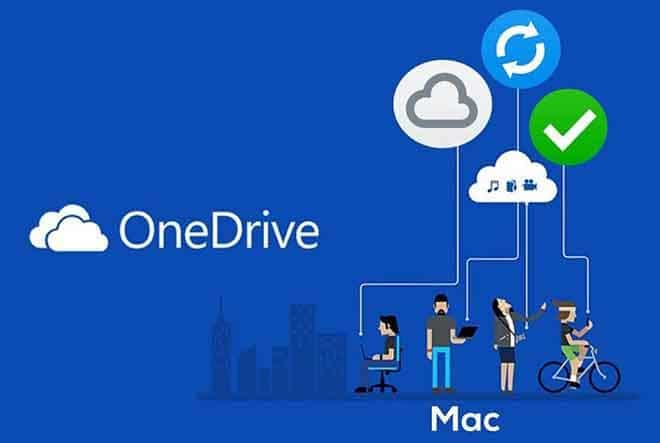Microsoft OneDrive plays an important role in the Microsoft 365 ecosystem. Cloud storage is tightly connected to all Microsoft services, including OneNote, Word, PowerPoint, Excel, and others. That’s why it’s available on all platforms. Like Windows, it is also optimized for Mac users.
Page Contents:
Using OneDrive on Mac, you can enjoy the same level of integration as Windows users with cloud storage. First, you need to download OneDrive from the Mac App Store. Follow the normal installation process and you will see a small OneDrive icon in the Mac menu bar.
Customize OneDrive for MAC
After installing OneDrive, you will notice a separate OneDrive space in the Finder menu. Go to the menu and you will see all the OneDrive folders and files synced with your Mac.
To personalize your OneDrive experience, tap the OneDrive icon in the menu bar and go to Help and settings. Select Preferences from the following pop-up menu. Let’s understand the main options from the OneDrive preferences menu.
Set up OneDrive folders
You can go to Preferences> Accounts> Choose Folders and select the OneDrive folders you want to sync with your Mac. People mostly skip personal folders during setup and keep OneDrive workbooks to sync with Mac.
At any time, you can go to the same menu in OneDrive and select or remove folders from your Mac.
Limit upload and download speed
OneDrive continues to run in the background on your Mac. If you haven’t enabled Files On-Demand, your Mac will continue to download OneDrive files to your device. If you have limited bandwidth to work with, the process slows down other activities as OneDrive consumes most of the available bandwidth.
To put the brakes on, you have an option to set the bandwidth limit for downloading and uploading speed to OneDrive. Open the OneDrive Preferences menu and go to Network. By default, Upload Speed and Download Speed are set to no limit. You can select the Limit to option and set the bandwidth speed.
Disable OneDrive opening on login
As mentioned above, OneDrive keeps running in the background all the time and when you start your Mac, the app will automatically start the syncing process. If you have too many apps opening during Mac startup, you need to disable the behavior. There are two ways to turn off OneDrive while your Mac is starting up.
Open the OneDrive Preferences menu and go to General> Uncheck the Open at login option.
Alternatively, you can open the System Preferences menu on Mac and go to Users and Groups> Admin> Login Items and disable the OneDrive option. From now on, OneDrive will not automatically start syncing.
Use OneDrive Files On-Demand
By default, all OneDrive folders remain in the cloud. You’ll notice a small cloud icon next to each OneDrive folder and file in the Finder menu. It suggests that the files are available on the cloud and not on the device.
You can right-click on any file or folder and select “Always keep on this device” and OneDrive will download the file for you. When you are done with the media or document, you can right-click on the file and select Free Up Space from the context menu.
Pause the sync
OneDrive works in the background. As soon as you make changes to a file or folder, it is synchronized with the service. At any time, pause OneDrive syncing from the Preferences menu.
Simply click on the OneDrive icon on the menu bar and go to Help & Settings> Pause Sync and select from the time range.
Disconnect OneDrive to MAC
At any time, you can unlink the existing OneDrive account on the Mac and sign in using another account. To disable the current account, tap the OneDrive icon on the menu bar and go to Help & Settings> Preferences> Accounts> OneDrive> Unlink this Mac.
Use OneDrive like a pro
OneDrive is the preferred choice for Microsoft 365 subscribers. If you prefer macOS on Windows 10, go ahead and set up OneDrive on Mac and start syncing all your files and folders.

